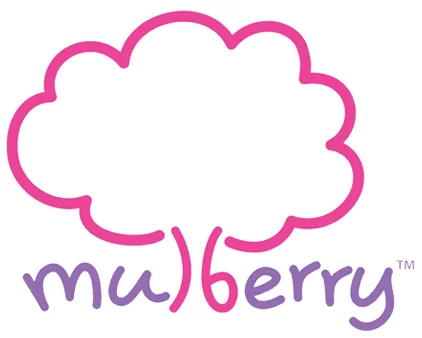Tips for Dealing With Preschooler Tantrums
Tips for Dealing With Preschooler Tantrums
Temper tantrums, although challenging, are a common part of childhood and can make parents doubt their abilities. This behaviour is most common in preschoolers because they are still developing emotional regulation skills and are on the path to learning them.
When children have tantrums, it can be confusing and overwhelming for parents. It is important to understand the cause of tantrums and guide children to express their emotions more maturely.

What Are and What Causes Tantrums?
Temper tantrums, or tantrums, are sudden outbursts of emotion experienced by young children when they feel frustrated or angry. Tantrums can involve various actions, such as biting, flailing, kicking, hitting, and yelling, and can be highly distressing for both the child and parent.
Tantrums occur when a child is unable to get what they want, and they often show this through crying and pleading. At this stage of development, children may find it difficult to regulate their emotions and express themselves effectively through words. Instead, they may use tantrums to convey their message, such as pulling a parent towards their desired location or climbing onto a chair to ask for what they want. Young children are still in the process of learning how to manage their emotions; even minor disagreements can quickly escalate into tantrums.
Preschoolers may become frustrated when they require help, as they value their growing independence. Children may also lose their cool when attempting a difficult task, such as tying their shoes and realizing they cannot do it on their own. If you are a parent struggling to manage your child’s tantrums, it’s essential to be patient and understanding. It’s also important to recognize that tantrums are a normal part of a child’s development and that they will eventually learn to regulate their emotions more effectively.

5 tips for Dealing with Preschooler Tantrums
According to the American Academy of Pediatrics (AAP), tantrums typically improve by the age of 3, but they may not disappear entirely. Children between the ages of 1 and 3 often throw tantrums to fulfil their basic needs.
While it may not be possible to prevent every tantrum, there are strategies to help you handle them more tactfully:
1. Stay Calm:
It’s essential to remain calm and composed when your preschooler has a tantrum. Avoid reacting with anger or frustration. A preschooler who sees their parents respond to their tantrums with composure and consistency learns where the boundaries are, which can help the child feel more secure and in charge.
Children often mirror the emotional tone set by adults, so staying calm can help de-escalate the situation.
2. Validate Their Feelings:
Let your child know that you understand they are upset or frustrated. You can use empathetic phrases like, “I can see you’re really angry right now,” to acknowledge their emotions. Validation can help them feel heard and understood.
When dealing with a preschooler’s tantrums, it’s important not to give in to all of their demands. Instead, when your child is upset and crying, it’s okay to comfort them by holding them in your arms and explaining the difference between good and bad behaviour. However, it’s important to wait until the child has calmed down and stopped crying before addressing the situation further.
After your child has calmed down from a tantrum, have a conversation with them about their feelings. For example, you could ask, “Did you throw the toy because you were upset that it wasn’t working?”
Regularly communicating with your child after a tantrum can help them better understand the situation, leading to calmer responses.
3. Offer Choices:
Providing age-appropriate choices empowers children to make decisions within boundaries. For example, “You can wear the red or blue shirt. Which one would you like?”
4. Redirect and Distract:
If you sense a tantrum coming, redirect your child’s attention to something else, like offering a favourite toy or suggesting a different activity. Changing focus can help prevent a tantrum.
5. Set Clear Expectations:
Establishing consistent rules and expectations and communicating them clearly to your child can reduce frustration. For example, you can tell your child they cannot watch TV until they finish dinner.
It is important to understand that change takes time, and it will require a lot of maturing on the part of your child before tantrums disappear altogether. Acquiring and honing self-regulation skills is a lifelong process. However, maintaining consistency on a daily basis is the secret to lowering the intensity and frequency of tantrums. Remember, time is a crucial factor in this process.

Conclusion
Tantrums are a normal part of preschoolers’ development as they learn to express emotions and assert independence. To handle these situations effectively, parents need to tailor their approach to their child’s needs and temperament.
As your baby goes through this phase, they will learn more ways to express their emotions, and parents must control their emotions and be patient with their children. Parents are the whole world for their kids, and with love and time, children will grow up to be healthy and happy individuals.
If you’re a parent looking for effective ways to handle your child’s tantrums, it’s important to understand that this is a normal part of their development. Taking a patient and understanding approach can help your child grow into a happy and confident individual.
Mulberry School Tour
Our Locations
Click here to visit our Contact Us page and view the preschool/infant care centres conveniently located near you.
CONNECT WITH US
USEFUL LINKS
About Us
Mulberry Learning prides itself on making the preschool experience both memorable and enjoyable while transforming a child into a competent explorer, an imaginative thinker, and a creative problem solver. Through our proprietary award-winning curriculum, unique Habits of Mind programme and dedicated staff who are passionate about imparting positive attitudes, Mulberry Learning holds strong in its promise to deliver a holistic education that nurtures the Future Ready Child.
A PREMIUM PRESCHOOL BRAND UNDER GLOBAL EDUHUB


